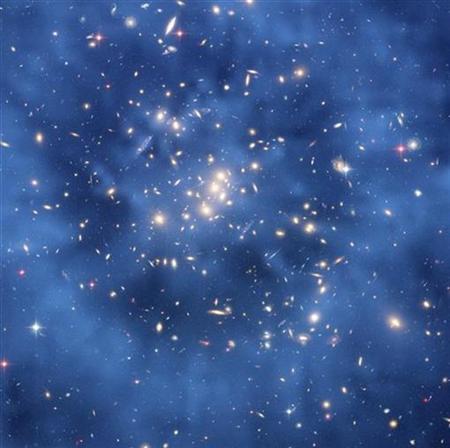
The findings published in the journal Nature move researchers a step closer to unraveling the mystery of the substance that makes up most of the universe, said Carlos Frenk, a cosmologist at Durham University in Britain.
"Discovering what dark matter is, is one of the most fundamental questions scientists can ask," Frenk, who worked on the study, said in a telephone interview.
"Uncovering the identity of the main component of the universe. That is what this is about."
Astronomers believe dark matter -- as opposed to ordinary matter making up the stars, planets and the like -- comprises about 85 percent of the universe's material, but evidence has been difficult to come by because it cannot be directly seen.
It does not reflect light nor normally shine, but astronomers infer its existence in galaxy clusters by observing how its gravity bends the light given off by even more faraway galaxies. They do not know what it is made of, but think it could be a kind of particle.
The international research team looked at a dark matter halo -- structures surrounding galaxies which weigh a trillion times more than the sun.
Their simulations showed how the galaxy's halo grew through a series of violent collisions between much smaller clumps of dark matter that emerged from the Big Bang.
In the densest part of the halo, the dark matter particles collide at high speed to produce a form of radiation called gamma rays. These gamma rays make the halo glow, giving scientists a potential way to detect dark matter.
The findings mean that NASA's Fermi Telescope should search in the part of the galaxy where the researchers predict dark matter should glow in "a smoothly varying and characteristic pattern" where it is easier to see, the researchers said.
That location is near the sun, just off the center of the Milky Way, Frenk said.
"What we have shown through a gigantic simulation is where the gamma rays would come from," he said. "We have given a blueprint for people on where to look and how the signal should appear."



Reader Comments
to our Newsletter